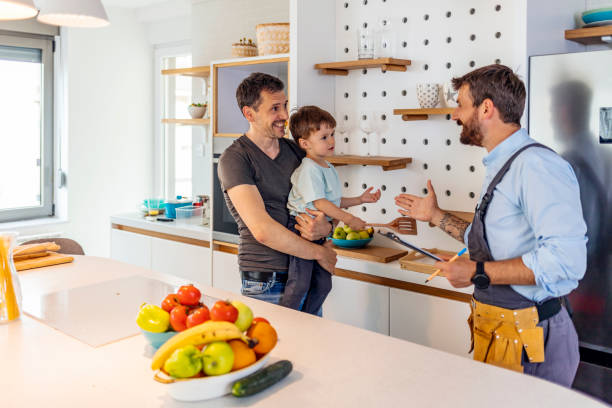When it comes to plumbing systems, many people prioritize inward pipe installation while overlooking pipe fittings and pipelines, which are critical to ensuring that your plumbing is fully operational and working properly. Understanding the significance of having a solid pipe framework is critical because if these fittings do not work properly, leakage occurs.
Plumbing fittings connect various pieces of plumbing equipment, such as lines, fixtures, and the joints that connect these installations. Quality pipe fittings and fixtures are required for a continuous water flow and a dependable plumbing framework.
However, several factors must be considered before selecting the appropriate materials for fittings and fixtures. To begin, you’ll need to consider the plumbing use. This implies that the water pressure should be appropriate for the pipe. For example, if you want high water pressure, you’ll need a pipe that’s wide, strong, and built to withstand a lot of force.
You should also consider the water type before purchasing plumbing fittings and fixtures. This is due to corrosive water in some areas, which dissolves plumbing fittings and fixtures. As a result, by selecting the proper materials, your pipes will not degrade after a short period of use.
Choosing the Best Plumbing Fittings and Fixtures
Whether you are building or renovating your home, you will eventually need to purchase plumbing fittings and fixtures based on your needs. Although these components are small and appear to be optional, they contribute to the overall plumbing framework. Consider the following factors when looking for the best pipe fittings and fixtures.
Cost
Choosing the right fittings and fixtures means staying within your budget without sacrificing quality. Purchasing branded plumbing accessories is, to say the least, costly, as you may end up spending more than you intended. To avoid running out of money before the project is finished, ask for recommendations and look for cheaper alternatives before making a purchase.
When it comes to quality
When purchasing plumbing fittings and fixtures, you should always consider the quality of the item. Installing low-cost, low-quality accessories will result in a budget disaster because they are prone to breaking and leaking. Leakage can also occur through an ingrained pipe that is difficult to locate and isolate, making repairs particularly costly. Consider buying something that will benefit you in the long run, such as fire-rated access doors and panels.
Material
Identifying your requirements will lead you to the best material for your plumbing fittings and fixtures. If you are unsure about what to buy, your contractor can make recommendations. Stainless steel, plastic, aluminum, concrete, copper, and glass are just a few of the materials used in fittings and fixtures.
Size
To ensure the stability of your plumbing system, you must install fittings and fixtures that are the proper size to hold the structure in place. When shopping for these accessories, remember to bring your measurements with you. Buying the wrong size accessories may cause the construction project to be delayed and throw you off track when it comes to your budget.
Aesthetic
Plumbing accessories include fittings and fixtures. As a result, it is best to buy items that will blend in with the overall aesthetic of your home or business. Fortunately, you can select from a variety of colors and designs.
When selecting the right plumbing fittings and fixtures, you must be extremely cautious in your selection needs. Considering these purchasing factors will ensure that your plumbing system works properly and lasts longer.
Plumbing Fixture Types
Because fixtures are intended to be used for an extended period of time, they are frequently made of durable materials that resist corrosion, erosion, and water stains. Plumbing fixtures are made from a variety of materials, including PVC, fiberglass, tile, marble, glass, stainless steel, and copper. Here are some examples of plumbing fixtures.
Toilets
Toilets may appear simple, but they have sophisticated systems and designs. It consists primarily of a water tank mounted above the bowl with a large curved drain in the bottom. The toilet is then positioned on the floor with its drain pipe connected and over the sewer pipe. Toilets differ in some parts of the world and come in a variety of styles, including flush toilets, dry toilets, urinals, and high-tech toilets.
Bathtubs
Bathtubs are commonly found in Bathtubs in bathrooms typically have a shower attachment that gives the user flexibility. Overflows, drains, and faucets in modern tubs help to regulate water flow and drain. Western-style bathtubs, Eastern-style bathtubs, claw-foot tubs, whirlpool tubs, and hot tubs are some of the most popular types of bathtubs.
Plumbing sinks
Are bowls or basins used in kitchens, bathrooms, and other utility rooms to hold water? Many sinks offer both cold and hot water, depending on the needs of the user. Self-rimming sinks, bottom-mount sinks, solid surface sinks, butler sinks, and stand-alone sinks are examples of sink types.
Showers
Are plumbing fixtures that use a nozzle to spray hot or cold water over a tub or shower area? The nozzle comes in a variety of shapes and sizes, but they all serve the same purpose. Water showers, electric
Showers
Air showers, steam showers, bucket showers, and beach showers are examples of standard showers.
Each plumbing fixture is available in a variety of styles, colors, and designs. Depending on the fixture, they can be both functional and aesthetically pleasing.
Because it handles water flow and waste disposal, your plumbing system is considered an essential component. Given this, an effective maintenance program and regular upkeep are critical to ensuring its stability. Furthermore, it is critical to outfit your water system with necessary components such as plumbing fittings and fixtures.
Bottom Line:
You need to be very careful when deciding on the appropriate plumbing fixtures and fittings and consider what you need. By taking these purchasing considerations into account, you can be sure that your plumbing system will function properly and last longer.
View your news on Google News or contact our team 


